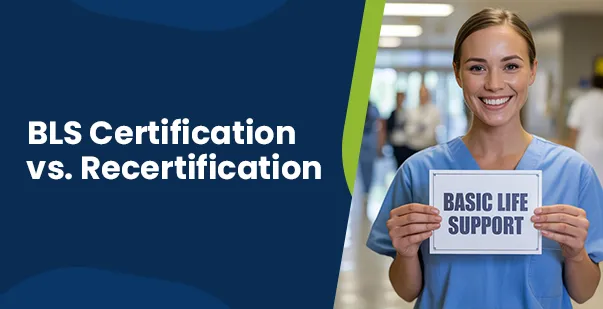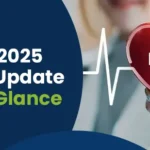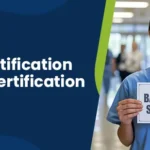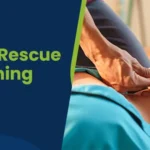Table of Contents:
- What Is BLS Certification?
- BLS Recertification: When and Why You Need It
- What Are the Differences Between the Initial BLS Course and the Renewal Course?
- What Are the Cost Differences Between Initial and Renewal BLS Courses?
- Do You Need to Retake the Full BLS Course if Your Certification Expires?
- What You Need to Know About the AHA 2025 Guidelines for BLS
- Why Staying Certified in BLS Matters
A 7-year-old boy named Preston Bell began choking on a coin while riding a school bus in Dallas. The driver, Raquel Radford Baker, noticed him struggling and quickly stepped in to help. Trained in cardiopulmonary resuscitation (CPR) through her school district, she calmly stopped the bus, performed the Heimlich maneuver, and dislodged the coin, saving Preston’s life. He later called her his hero, and the community praised her quick, life-saving action (Source: ABC News Network).
These types of cases are a reason Basic Life Support (BLS) training is needed, and remaining certified is so important. In this guide, you will uncover the key differences between BLS recertification vs initial certification, how often it is needed to renew it, how expensive it is, and what the 2025 AHA guidelines in the future mean to healthcare providers and first responders.
What is BLS Certification?
BLS is a type of specialized training that teaches you how to respond quickly and effectively during life-threatening emergencies such as cardiac arrest or choking. BLS certification is required for most healthcare workers (including nurses, physicians, EMTs, and other clinical staff). It is also helpful for anyone who wants to learn how to save lives using CPR and use an automatic external defibrillator (AED).
The BLS certification course typically covers:
1. CPR Techniques for All Ages
You will learn how to perform high-quality CPR on adults, children, and infants. This includes correct hand placement, chest compression depth and rate, and how to give rescue breaths. Mannequins help us develop the muscle memory needed for quick response. A meta-analysis of 13 studies in the Cardiology Journal showed standard CPR with ventilation led to a 10.2% survival to discharge vs. 9.3 % for chest-compression-only CPR.
2. Using an AED
An automated external defibrillator (AED) is a portable device that checks the heart’s rhythm and can give an electric shock to help revive it during sudden cardiac arrest. The course teaches you how to turn it on, follow voice prompts, attach the pads properly, and deliver a shock if needed. Early defibrillation is an important intervention in the reinitiation of the heart in sudden cardiac arrest.
3. Relief of Choking (Airway Obstruction)
You will be instructed on how to recognize if an individual is choking and how to relieve it. Techniques include back blows and abdominal thrusts (Heimlich maneuver) in adult and juvenile scenarios and special procedures in infant cases. These procedures will unclog the breathing route and save a life.
4. Team-Based Operations and Communication
The course trains on how to give a coordinated rescue and how to interact with other individuals in the event of an emergency. You will be trained on how to delegate tasks, issue clear instructions, switch rescuers in CPR, and achieve proper timing. Good communication and collaboration improve the chances of saving a life in time-sensitive emergencies.
Read More: BLS Certification for Physical Therapy
BLS Recertification: When and Why You Need It
The most common question people have is “How often to renew a BLS license?” BLS recertification is required every two years. A study in JMIR Medical Education compared blended learning vs traditional instructor-led refresher CPR courses. Retraining every 6 months helped maintain proficiency better than annual retraining. This shows that training is necessary to keep your life-saving skills fresh and up-to-date. If your BLS card is about to expire or has expired within the last 30 days, you are still eligible to take a renewal course. However, if it has expired for more than 30 days, you will need to take the full initial BLS certification course again.
Why Recertification Matters?
Medical guidelines may vary, such as changes to the appropriate compression rate and compression/rescue breath ratio. Frequent recertification guarantees that you are up to date on the newest CPR methods and emergency procedures. It will also keep you confident and ready in actual life emergencies. The majority of employers, particularly in the healthcare industry, require a current BLS certification, so maintaining it is crucial to your employment and to patient safety.
Differences Between the Initial BLS Course and the Renewal Course
Understanding the differences between first-time BLS and renewal courses is important for anyone planning to get or maintain their certification. While both courses prepare you for emergencies, they vary in length, content, cost, and requirements. The table below lists the differences between BLS recertification vs initial certification.
| Parameter | Initial Certification | Renewal Certification |
| Who It’s For | Designed for first-time participants or those whose certification has expired for a long time. | Intended for providers who have a current certification or one that has recently expired. |
| Course Depth | Includes in-depth theory lessons and extensive hands-on practice for all key skills. | Serves as a refresher with a focus on updated guidelines and reviewing core skills. |
| Cost | Usually higher due to longer duration and additional training materials. | More affordable because it is shorter and requires fewer materials. |
| Exams | Requires passing a detailed written exam and a full hands-on skills test. | Includes a shorter written test and a quicker hands-on skills check. |
| CME credits | Usually offers around 4 Continuing Medical Education (CME) credits. | Generally provides about 2 CME credits. |
Cost Differences Between Initial and Renewal BLS Courses
BLS recertification vs. initial certification cost may change depending on the course that you choose to opt for. The initial courses in BLS are expensive due to their long duration and the intensive training and publications. The courses come at an average price range of $35 – $70 and comprise classroom instructions, print student guides, examinations, and instructor fees.
The courses that renew BLS certification are shorter in duration and usually in the range of 3 to 4 hours, and are less expensive. Hence, these are cheaper and even cost up to around $36.95.
Bundles And Price Discounts
Several training centers even offer discounted rates to repeat students who return in recertification at the same location where the initial certification took place.
- Recertification discounts might even reduce costs further and sometimes present bundled deals for BLS, Advanced Cardiac Life Support (ACLS), or Pediatric Advanced Life Support (PALS) levels.
- Some online courses even offer early renewal special deals or promo codes that will reduce costs if pre-registered upon the expiration of the card.
Recertification of your BLS is quicker and simpler, and cheaper except if you plan ahead and recertify from the same provider.
What You Need to Know About the AHA 2025 Guidelines for BLS
The American Heart Association (AHA) will release its new CPR and Emergency Cardiovascular Care (ECC) Guidelines on October 22, 2025. These updates aim to improve survival rates and reflect the latest scientific research in resuscitation.
- There can be updates in CPR compression rates, revised rescue breathing ratios, and improved guidance for infants and children. Instructors will also receive new e-learning modules to help them teach the updated material.
- There will be a 90-day transition period starting October 22, 2025. During this time, instructors must complete the update training and may begin using the new materials. By March 1, 2026, all courses must follow the 2025 standards.
- Anyone taking a BLS certification or renewal course on or after October 22, 2025, will be trained using the new 2025 BLS recertification guidelines.
Read More: BLS 2020 to 2025 Guideline Changes
Why Staying Certified in BLS Matters
BLS certification is more than just a course; it’s a skill that can save lives in emergencies. Whether you’re getting certified for the first time or renewing your card, both courses help you stay prepared to act during a heart attack, choking incident, or other serious situation.
The initial course provides the full training you need, while the renewal course refreshes your memory and updates your skills. Understanding the differences between BLS recertification vs. initial certification in terms of cost, time, and course content can help you choose the right option based on your needs. Don’t wait until it’s too late. Whether you’re due for a renewal or getting started, sign up for a BLS certification course today, as your training could save a life.
